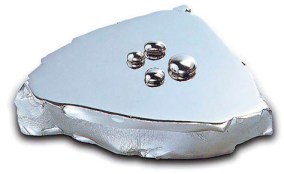
Last month, there were rumors claiming Apple planned to use the Liquidmetal amorphous metal alloys it obtained the rights to in 2010 for an upcoming iPhone. Speaking with BusinessInsider, one of Liquidmetal’s inventors, Atakan Peker, said Apple is still a few years away before we will see Liquidmetal used in a large scale—at least for MacBooks. Although, he does think a breakthrough product made of the material is in the cards for Apple.
A few highlights from the interview are below:
How long did it take to perfect Liquidmetal?
I would not say Liquidmetal was perfected. This is a technology that has yet to be matured and perfected both in manufacturing process and application development. I should note that this is a completely new and different metal technology. Therefore, there is no suitable manufacturing infrastructure yet to take full advantage of this alloy technology.
For example, I estimate that Apple will likely spend on the order of $300 million to $500 million — and three to five years — to mature the technology before it can used in large scale.
I’ve heard rumors that future MacBooks from Apple could use Liquidmetal casing, what would that be like? Is it likely to happen?
Given the size of MacBook and scale of Apple products, I think it’s unlikely that Liquidmetal casing will be used in MacBooks in the near term. It’s more likely in the form of small component such as a hinge or bracket. A MacBook casing, such as a unibody, will take two to four more years to implement
How does Liquidmetal compare to the metal, glass, and plastic used in mobile devices now?
Each material has its own advantage and disadvantages. Plastics are low cost to manufacture into complex shapes but not strong enough. Metals are strong but difficult to produce into complex shapes. And glass feels and looks beautiful but is highly fragile. Liquidmetal can combine these advantages and remedy some of these shortcomings.
Is there anything else relating to mobile gadgets and Liquidmetal that you think people should know about?
I expect Liquidmetal application in two ways: First evolutionary substitution of current materials and secondly, and more importantly, in a breakthrough product made only possible by Liquidmetal technology. Apple’s exclusively licensing a new material technology (specifically for casing and enclosures) is a first in the industry.
This is very exciting. Therefore, I expect Apple to use this technology in a breakthrough product. Such product will likely bring an innovative user interface and industrial design together, and will also be very difficult to copy or duplicate with other material technologies.
You can read the full interview at BusinessInsider.



